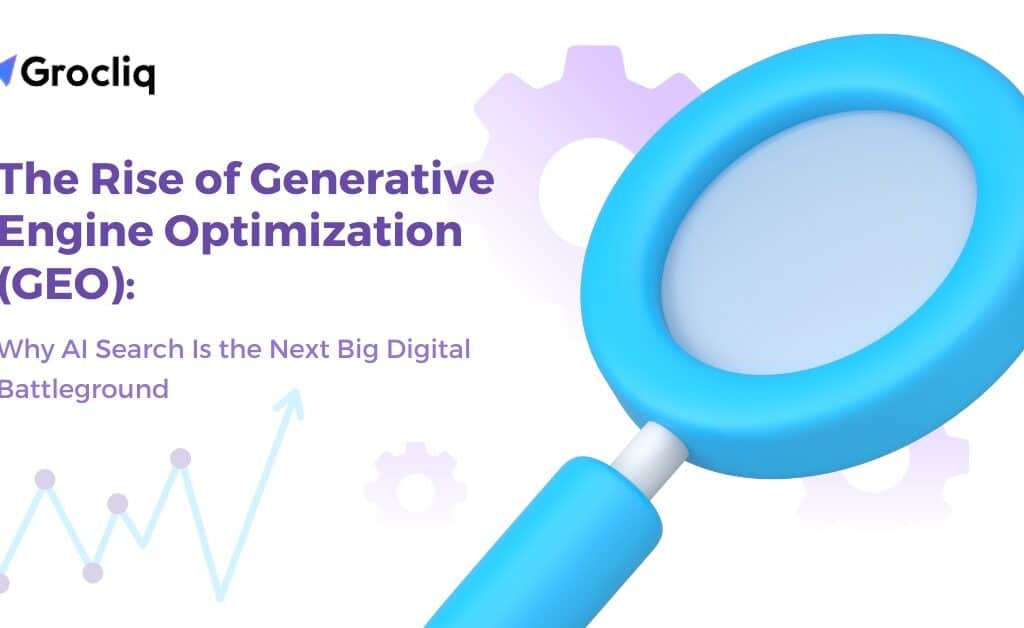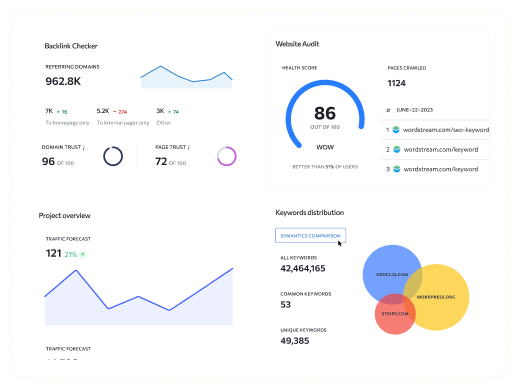Technical SEO is crucial for enhancing your website’s performance and visibility on search engines. For Wix users, understanding and implementing technical SEO practices can significantly boost your site’s ranking and organic traffic. This comprehensive guide will delve into the essential Wix technical SEO strategies to help you optimize your website effectively. Whether you are a beginner or an experienced user, this guide will provide actionable insights to improve your site’s technical SEO.
Wix offers a range of powerful SEO tools and features designed to simplify the optimization process. By leveraging these tools and following best practices, you can ensure that your Wix site is not only user-friendly but also search engine-friendly. From site speed optimization to structured data implementation, we cover all the critical aspects you need to master for a successful SEO strategy on Wix.
Understanding Technical SEO
What is Technical SEO?
Technical SEO refers to the process of optimizing a website’s technical aspects to improve its organic search rankings. This involves enhancing site speed, ensuring mobile-friendliness, making your site easier for search engines to crawl and index, and implementing structured data. Technical SEO is the foundation that supports other SEO efforts, such as content creation and link building, ensuring that all elements work harmoniously to boost your website’s visibility.
Key Components of Technical SEO:
- Site Speed: Ensuring your site loads quickly. Faster websites provide a better user experience and are favored by search engines.
- Crawlability: Making sure search engines can crawl your site efficiently. This involves managing your site’s architecture and internal linking.
- Indexability: Ensuring search engines can index your site’s content properly, making it available in search results.
- Structured Data: Implementing schema markup to help search engines understand your content better.
How Wix Supports Technical SEO
Wix provides a range of built-in tools and features to support technical SEO, making it easier for users to optimize their websites without extensive technical knowledge.
Key Wix SEO Tools and Features:
- SEO Wiz: A step-by-step plan to help improve your site’s SEO by guiding you through essential optimization tasks.
- Mobile Optimization: Tools to ensure your site is mobile-friendly, which is crucial given the increasing number of mobile users.
- Customizable URL Structure: Easy-to-manage URL settings that allow you to create SEO-friendly URLs.
- Structured Data Markup: Wix offers tools to help you implement structured data without requiring advanced coding skills.
Setting Up Your Wix Site for Technical SEO Success
Initial Setup
- Choosing the Right Template: Start with a mobile-responsive template to ensure your site looks good on all devices. Mobile responsiveness is essential as Google uses mobile-first indexing, meaning it predominantly uses the mobile version of the content for indexing and ranking.
- Mobile Responsiveness: Test your site on various devices to ensure a seamless user experience. Tools like Google’s Mobile-Friendly Test can help you identify and fix mobile usability issues.
Site Structure Optimization
- URL Structure: Use short, descriptive URLs that include your primary keywords. Avoid using unnecessary parameters and special characters.
- Navigation and Internal Linking: Create a clear navigation menu and use internal links to help search engines and users navigate your site. Proper internal linking can distribute page authority throughout your site and help search engines understand the structure of your content.
Core Technical SEO Practices for Wix
Optimizing Site Speed
- Image Optimization: Compress images to reduce load times without sacrificing quality. Tools like TinyPNG can help you compress images effectively.
- Minimizing JavaScript and CSS: Remove unnecessary code to speed up your site. This can be done by minifying files, which means removing all unnecessary characters from the source code without changing its functionality.
- Leveraging Browser Caching: Enable caching to improve load times for returning visitors. This involves storing some parts of your website in the user’s browser, so they don’t have to be reloaded every time the user visits your site.
Enhancing Crawlability and Indexability
- Creating and Submitting Sitemaps: Submit your sitemap to Google Search Console to help search engines find and index your pages more efficiently. Wix automatically generates a sitemap for your site, which you can customize and submit.
- Managing Robots.txt: Ensure your robots.txt file does not block important pages from being crawled by search engines. This file tells search engine bots which pages they can and cannot access.
- Resolving Crawl Errors: Regularly check and fix crawl errors reported in Google Search Console. Crawl errors can prevent search engines from indexing your site properly, which can negatively impact your SEO.
Implementing Structured Data
- Importance of Structured Data: Structured data helps search engines understand your content better and can enhance your search listings with rich snippets, such as star ratings, images, and other relevant details.
- Using Wix’s Built-In Structured Data Tool: Simplify the process with Wix’s tools that allow you to add structured data without needing to code.
- Types of Schema Markup to Implement: Use schema for products, articles, and events to make your content more appealing in search results.
Advanced Technical SEO Strategies
Utilizing Canonical Tags
- What Are Canonical Tags? Canonical tags prevent duplicate content issues by specifying the preferred version of a webpage when multiple versions exist.
- How to Implement Canonical Tags in Wix: Use Wix’s SEO panel to set canonical tags, ensuring that search engines know which version of a page to index.
Managing 404 Errors and Redirects
- Identifying and Fixing 404 Errors: Use tools like Google Search Console to find and fix broken links that lead to 404 errors, which can harm your site’s user experience and SEO.
- Setting Up 301 Redirects: Redirect old URLs to new ones to maintain SEO value. A 301 redirect indicates that a page has permanently moved to a new location, transferring most of its SEO value to the new URL.
Optimizing for Mobile-First Indexing
- Understanding Mobile-First Indexing: Google primarily uses the mobile version of your site for indexing and ranking. Ensuring your site is mobile-friendly is crucial for SEO success.
- Best Practices for Mobile Optimization: Ensure your site is mobile-friendly with responsive design, fast loading times, and easy navigation.
Tools and Resources for Wix Technical SEO
Essential SEO Tools
- Google Search Console: Monitor your site’s performance and troubleshoot issues. It provides valuable insights into how Google views your site and can help you identify and fix technical issues.
- Wix SEO Wiz: Follow a personalized SEO plan provided by Wix, which guides you through essential optimization tasks.
- Third-Party SEO Tools: Use tools like Screaming Frog and Deepcrawl for deeper analysis. These tools can help you identify and fix technical SEO issues on your site.
Learning and Staying Updated
- SEO Blogs and Forums: Follow industry news and updates from reputable sources like Moz, Search Engine Land, and the Wix SEO Blog.
- Webinars and Online Courses: Enroll in courses from platforms like Coursera, Udemy, and the Wix SEO Learning Hub to enhance your SEO skills.
- Following Industry Experts: Stay connected with SEO thought leaders on social media, such as Aleyda Solis, Rand Fishkin, and Barry Schwartz.
Conclusion
In this comprehensive guide, we’ve covered the essential aspects of Wix technical SEO to help you optimize your site. By following these best practices and utilizing Wix’s built-in tools, you can significantly improve your site’s performance and visibility on search engines. Regular audits and continuous learning are key to staying ahead in the SEO game.
Note: Read Our Latest Marketing and SEO Blogs:
AI Powered SEO | What is wix analytics | What is b2c seo | Ai seo content generator | Ai is Transforming E Commerce | Ai Semantic SEO | AI for SEO Optimization | AI SEO Prompts | Structured Content AI | What is cluster ai seo .
Frequently Asked Questions
Q1. What is the primary goal of technical SEO?
A1: The primary goal is to optimize the technical aspects of a website to improve its search engine ranking and user experience. This involves enhancing site speed, crawlability, and indexability.
Q2. How can I improve my Wix site’s speed?
A2: You can improve your site’s speed by compressing images, minimizing JavaScript and CSS, enabling browser caching, and using a fast, reliable hosting service.
Q3. What is a canonical tag and why is it important?
A3: A canonical tag prevents duplicate content issues by specifying the preferred version of a webpage. This helps search engines understand which page to index and rank, preserving the SEO value of your content.
Q4. How often should I perform an SEO audit on my Wix site?
A4: It’s recommended to perform an SEO audit monthly to ensure your site remains optimized and to identify and fix any issues that may arise.
Q5. What tools can I use to monitor my Wix site’s SEO performance?
A5: Use tools like Google Search Console, Wix SEO Wiz, and third-party SEO tools like Screaming Frog and Deepcrawl to monitor your site’s SEO performance and identify areas for improvement.





